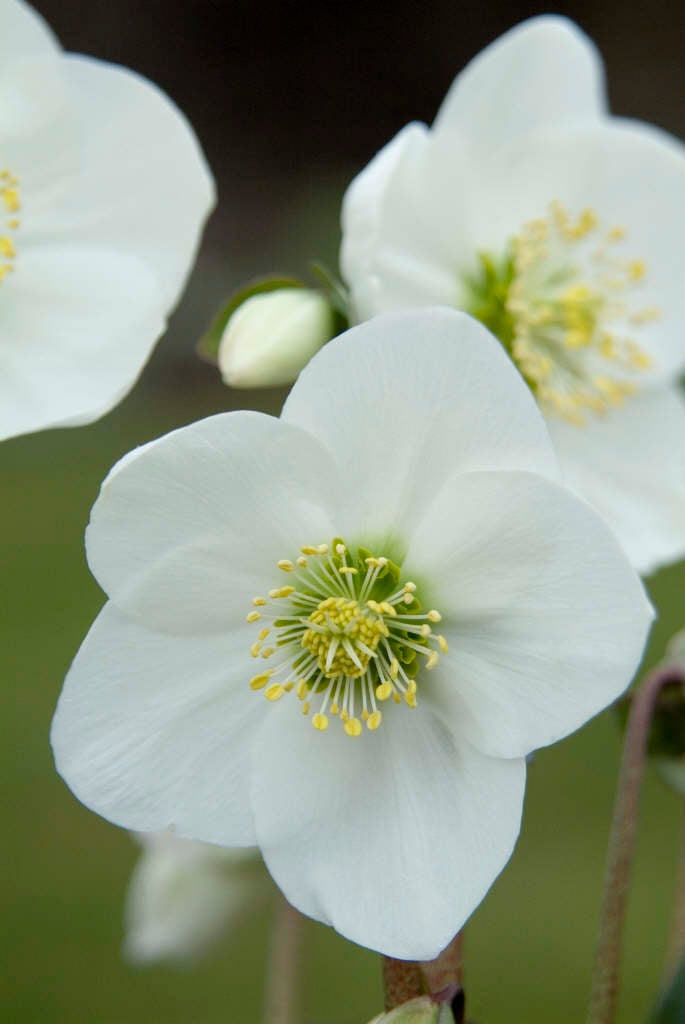Helleborus niger
Christmas rose
A short, evergreen perennial to 30cm, with leathery, dark green leaves composed of 7 to 9 leaflets, and 1-3 pure white or pink-flushed white, bowl-shaped flowers up to 8cm in width on stout stems, produced from midwinter to early spring
Other common names
bear's footblack hellebore
see morebrumal rose
Christmas plant
Christopher's herb
Christ's herb
clove-tongue
St Agnes' rose
Size
Ultimate height
0.1–0.5 metresTime to ultimate height
2–5 yearsUltimate spread
0.1–0.5 metresGrowing conditions
Moisture
Moist but well–drainedpH
Alkaline, NeutralColour & scent
| Stem | Flower | Foliage | Fruit | |
| Spring | Pink White | Green | ||
|---|---|---|---|---|
| Summer | Green | |||
| Autumn | Green | |||
| Winter | Pink White | Green |
Position
- Partial shade
Aspect
East–facing or North–facing or West–facing
Exposure
Sheltered Hardiness
H7Botanical details
- Family
- Ranunculaceae
- Native to GB / Ireland
- No
- Foliage
- Semi evergreen
- Habit
- Clump forming
- Potentially harmful
- Harmful if eaten, skin irritant. Wear gloves and other protective equipment when handling. Pets: Harmful if eaten, skin irritant. For further information and contact numbers regarding pets, see the HTA guide to potentially harmful plants
- Genus
Helleborus can be rhizomatous, herbaceous or semi-evergreen perennials forming a clump of pedate basal leaves, or evergreen with erect, leafy stems. Large, bowl-shaped flowers are borne in loose clusters in late winter or spring
- Name status
Correct
- Plant range
- Europe, SW Asia
How to grow
Cultivation
Thrives in neutral to alkaline soils that are moist, fertile and humus-rich, ideal for heavy clay in partial shade. Provide shelter from strong, cold winds. Mulch annually in autumn. See hellebore cultivation for further advice
Propagation
Propagate by seed in pots in a cold frame as soon as seed is ripe or propagate by division after flowering in early spring or late summer
Suggested planting locations and garden types
- Cottage and informal garden
- Wildlife gardens
- Cut flowers
- Flower borders and beds
- Underplanting of roses and shrubs
Pruning
Remove faded or damaged foliage as the flowers appear
Pests
May be susceptible to hellebore aphid, hellebore leaf miner and snails
Diseases
May be susceptible to hellebore leaf spot and hellebore black death
Get involved
The Royal Horticultural Society is the UK’s leading gardening charity. We aim to enrich everyone’s life through plants, and make the UK a greener and more beautiful place.
